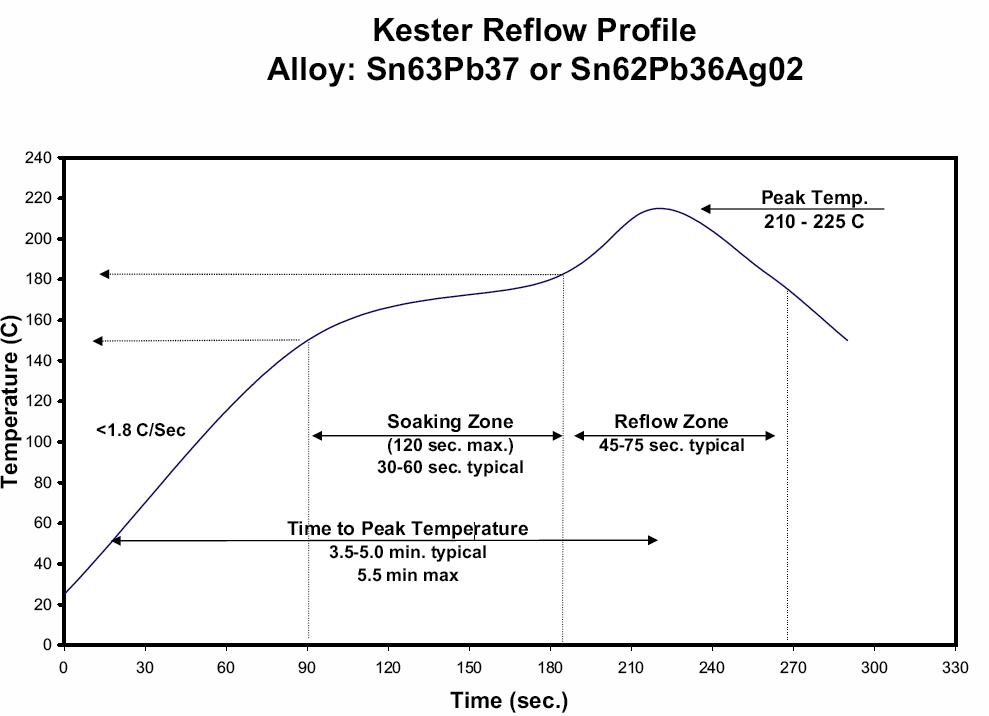
Granted there may be some boards so similar that a new reflow profile is not needed e.g. His focus has been the design and application of measurement tools used to improve manufacturing thermal processes and well as moisture sensitive component storage solutions.Įach and every board should have its own profile. He has seen and worked with the electronic manufacturing industry from many points of view, including: technician, engineer, manufacture, and customer. (ECD) in Milwaukie, Oregon for over 39 years as a Senior Project Engineer. Paul been with Electronic Controls Design Inc. Without the thermal profile of the new assembly, you will only be guessing and you will have no proof the recipe settings are sufficient. Given the thermal profile of the new assembly, you can determine if the oven recipe settings need to be changed to prevent component damage and or meet the thermal profile needs of the solder paste. This will allow you to see for sure of the current oven recipe settings meet the thermal requirements of the components and solder paste. Whether a different assembly needs new oven recipe settings or not can only be shown by performing a thermal profile of that new assembly.

You are correct in your thinking that different board types, thicknesses and component densities may demand different oven recipe settings (profile).

He is a key member of ANSI J-STD 002 and 311 G Committees Expert in Surface finish, Solderability issues and Failure analysis in the PWA, PWB and component fields. Gerald O'Brien is Chairman of ANSI J-STD 003, and Co Chairman of IPC 4-14 Surface Finish Plating Committee. In other words you typically cannot use a single reflow profile for significantly different boards, i.e. In addition, you would have to verify that voiding would not become an issue with a single profile. The only way that a single profile could be used for all board designs would be if the rate of rise and cool down temperatures are not in violation of the chip suppliers and that the time above Liquidus does not become excessive with a resultant heavy IMC being formed that would have a negative impact on reliability. Fritz has published over a dozen papers at various industry conferences. Design of Experiments (DoE) techniques have been an area of independent study. Fritz's educational background is in mechanical engineering with an emphasis on materials science. The advantage of doing this is that profile changes become nearly instant, since no temperature settings are changed.įritz's career in electronics manufacturing has included diverse engineering roles including PWB fabrication, thick film print & fire, SMT and wave/selective solder process engineering, and electronics materials development and marketing. Once you do, it may well be possible to group them according to common profiles.įurther, if you have a basic profile, and you need a slightly warmer or cooler profile, it may be possible to achieve this by small changes in the conveyor speed, as long as the timing of preheat,time over liquidus, and cool-down are not affected too much. There is no substitute for really understanding the thermal requirements of each assembly part number. And don't forget that most ovens respond to load slowly enough that the second board may see slightly different temperatures than the first, and that temperatures very near the rails are almost always cooler. The thickness of the PWB, amount and location of copper in the PWB, the component locations and masses, presence of "back-to-back" components on the assembly, and other variables all contribute to the thermal requirements. The emphasis here is on the testing.Every board has unique thermal requirements.

Through careful testing, you may find that you can narrow the number of required profiles to just a few, however(the number depends on your product mix).

Kris is certified as an Master Instructor in IPC-7711 / 7721, IPC A-610 and IPC J-STD 001. Kris Roberson has experience as a machine operator, machine and engineering technician and process engineer for companies including Motorola, and US Robotics.


 0 kommentar(er)
0 kommentar(er)
